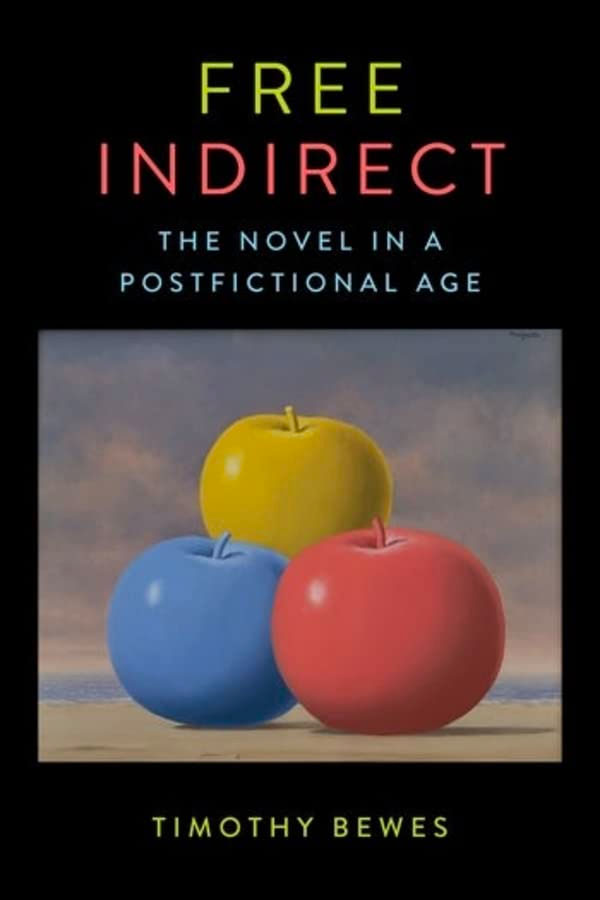How does the novel think? How does it register thought? And how do we as readers distinguish between what the characters in the book think and what the writer behind it thinks—or, at least, what we think the writer might be thinking? Moreover, what does it mean to attribute a process of thought to the novel itself, as distinct from its narrator, characters, author, or readers? What is the value in doing so?
These questions have preoccupied literary scholars and theorists for decades, and they are at the core of Timothy Bewes’s groundbreaking Free Indirect: The Novel in a Postfictional Age (Columbia University Press). Since roughly the start of the millennium, Bewes argues, a subtle yet seismic shift has occurred, one that has reshaped the narrative landscape by eroding the boundaries between reality and fiction. Consider the attention recently bestowed on autofiction—the strange hybrid genre in which elements of autobiography and aspects of fiction coalesce, underscoring their frictive relationship—and you will begin to understand what Bewes means when he contends that we are living in “a postfictional age.”
By the first part of the twenty-first century, according to Bewes, a distinct type of literary novel had emerged that undermines those thought-related concepts—subjectivity, consciousness, omniscience—traditionally viewed as essential to both the genre and the study of it. In Bewes’s account, recent works by writers including J.M. Coetzee, W.G. Sebald, Teju Cole, Zadie Smith, and Rachel Cusk, among others, share “a quality of not only refusing to connect the work and the world but of thinking, inhabiting, [and] even forging the space of their disconnection.” They do so by means of what Bewes calls the “free indirect,” a term he derives from free indirect discourse, “the ‘style’ of represented speech and thought that the modern novel is widely reckoned to have invented.” (Think of Jane Austen’s narrative voice, the most well-known example.) Bewes’s term is slightly different and more specific: it refers to a mode of thought that is neither “localizable in an ‘encapsulated self or other’ (a character or narrator)” nor given typical cognitive forms like “speaking, seeing, or knowing.”
This complex idea is best understood by analogy to cinema. In a series of brilliant chapters in the latter part of the book, Bewes draws on film theory to show how the moving pictures we encounter on the screen present us with a perspective on the events depicted that lies outside any one individual. In other words, when we watch a movie, what we see comes to us from the vantage of the camera(s). The sequence of images does not present a discrete point of view, as film does not, as a general rule, attempt to inhabit a single mind. The postfictional narrative operates in a similar fashion, Bewes suggests, and requires that we reconceive it “not as a form but as a logic” and view its project not as “representation but as a thought that is always emerging—a thought of which the novel is the subject rather than a vehicle.”
The genius of Free Indirect inheres in the fact that, even while Bewes illustrates the limitations of traditional approaches to the study of the novel, he somehow finds a way to transcend them. The result is a densely-packed volume that erupts with insight on every page. Bewes has produced a work for the ages—an intervention in critical theory that will forever change the way we read fiction.



